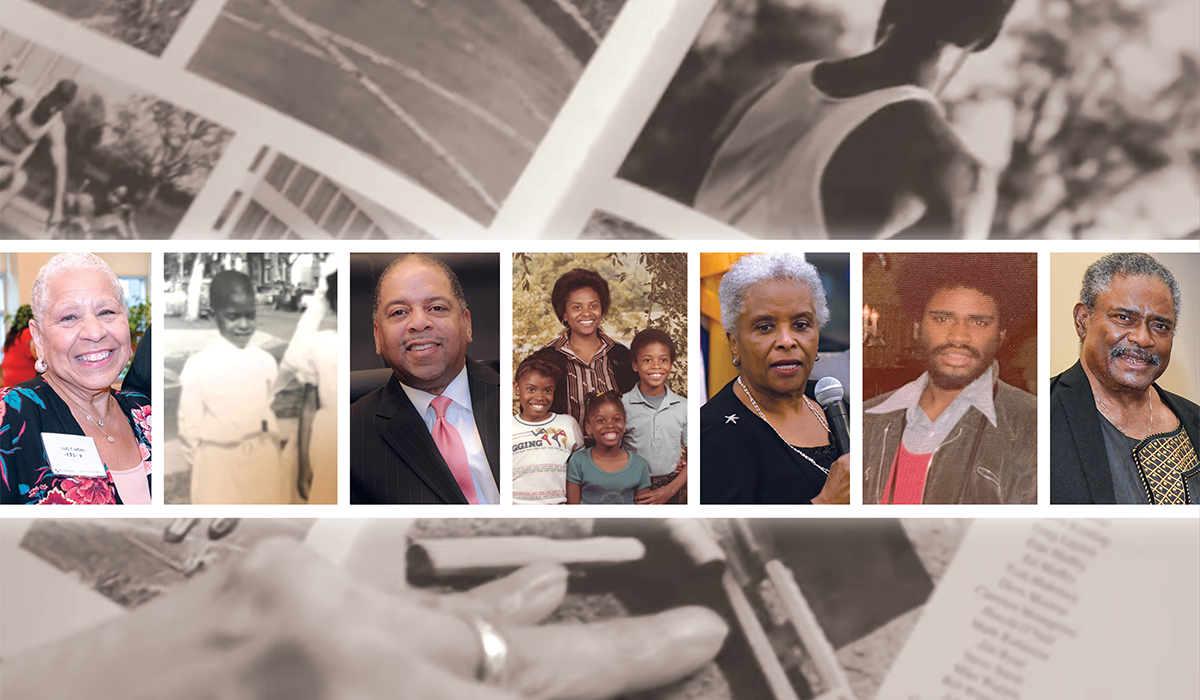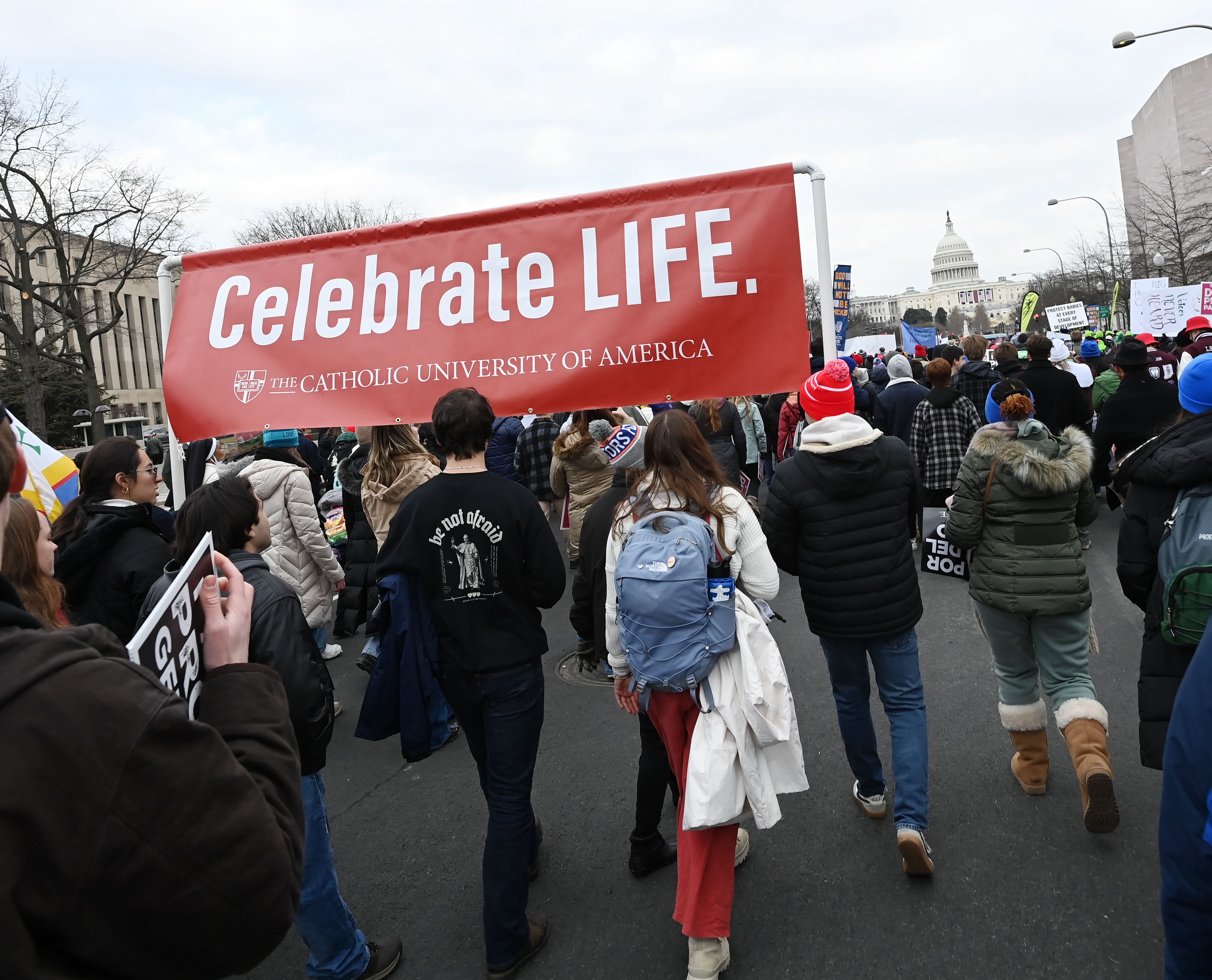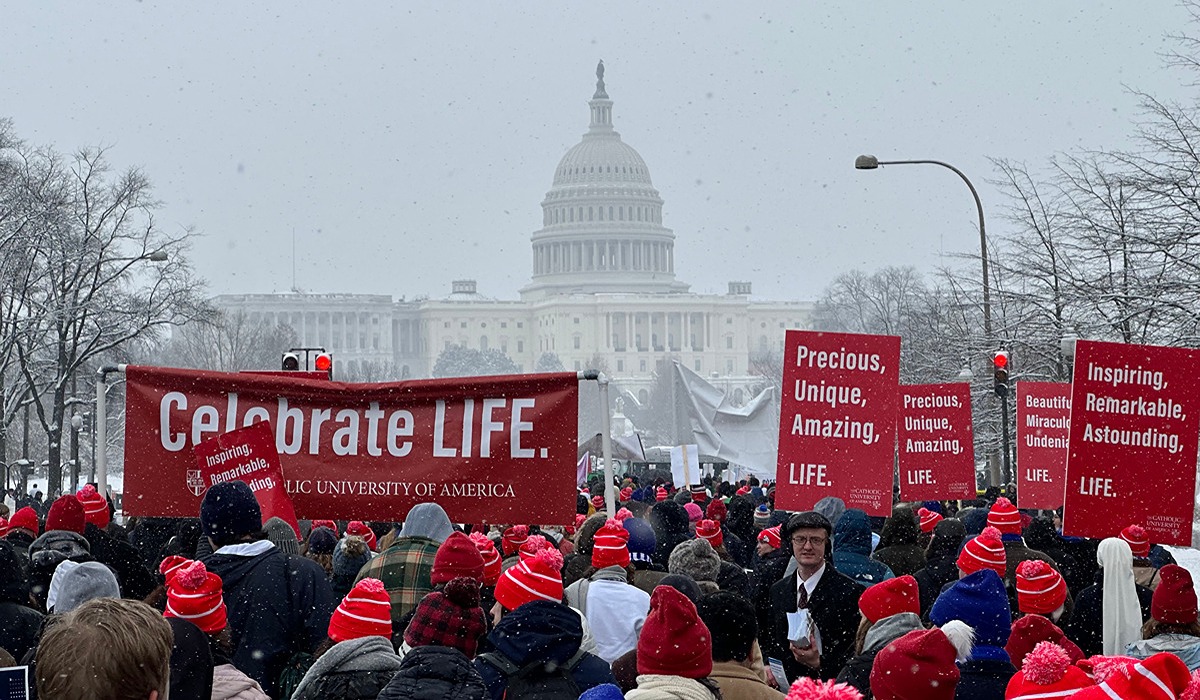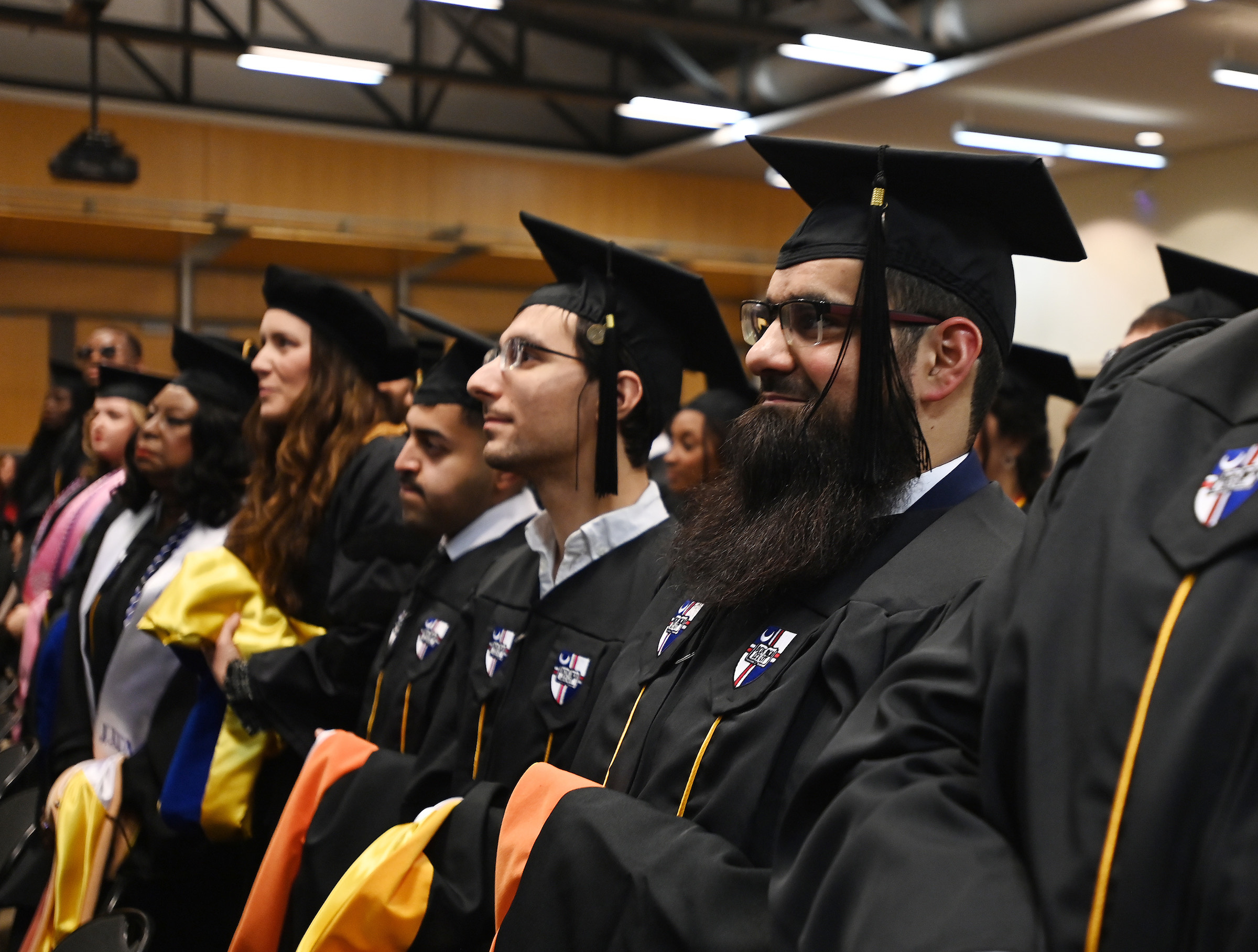Bonds that Break Barriers
It all started with a lifelong friendship forged between LeBuffe and Aubry on campus in the early 1960s. They were both active in the Civil Rights Movement and were among the over 200 University community members at the 1963 March on Washington where Martin Luther King Jr. proclaimed his dream for racial harmony.
Despite the progress made in the city they called home, Aubry and LeBuffe knew that the different colors of their skin still meant they lived in practically different worlds. They bonded over their desire to change that and stayed in touch after graduation.
Aubry started teaching at Ocean-Hill Brownsville school district in Brooklyn, N.Y., which was getting national attention for the majority Black community’s effort to address racial disparities by challenging the school system’s status quo. LeBuffe stayed in Washington, D.C., to work at the University’s admissions office.
It was 1968 and tensions across the country kept heating up. Aubry remembers when he heard the terrible news: Martin Luther King Jr. had been shot dead. His heart sank. This was a devastating blow to the Civil Rights Movement and he feared for the future of the country.
Grief, anger, and frustration fueled four days of protests that erupted at times into riots that devastated U.S. cities including the nation’s capital. Untouched by the fires, the University was perceived as living up to the reputation of higher education as an ivory tower. In a majority Black city, the campus remained almost entirely white.
Within the University community there was growing recognition that it wasn’t enough to say the door is open, you had to give people the keys to success. The University asked LeBuffe to lead the development of a scholarship and retention program for marginalized city residents. He knew exactly who to call. Aubry accepted, believing that God, through LeBuffe, was calling him back to the University to transform it.
Fighting for the Future
The initiative, dubbed the Partnership Program, depended on the collaborative efforts of the University community and beyond to succeed. For Aubry and LeBuffe, the name also reflected how they saw, and continue to see, each other. “I never saw him as my boss. We were partners,” said Aubry.
They recruited 35 local high school students with high potential but low prospects for college because of financial limitations. By combining University support with private donations and public grants, LeBuffe and Aubry identified funds for substantial scholarships up to full tuition with room and board.
Ronny Lancaster was with his best friend, Kenneth Walker, when they first heard about the Partnership Program from a teacher. They had never considered the University an option before, but now they were presented with a once-in-a-lifetime opportunity. They both applied.
LeBuffe and Aubry identified more talented teenagers than they could fully fund, but worked to secure scholarships for as many students as they could. Lancaster suspects he applied toward the end of the process, because he got half tuition while others were fully funded. Nevertheless, he accepted because he correctly predicted the University’s academic reputation would help him gain entry to prestigious post-graduate programs.
The Partnership Program also presented an opportunity for LeBuffe and Aubry to prove that many students’ high school performance said more about their circumstances than their ability. Among their number was Walker, who was stretched thin because he worked full time after school. He didn’t make the initial cut, but Aubry and LeBuffe encouraged him to go to The Washington Starnewspaper to ask for funding.
“I was too young to see how ridiculous that was,” said Walker. “But I got a full scholarship and an entry level job that led to my career in print and broadcast journalism.”
Aubry and LeBuffe created a summer college preparation course to be sure the Partnership Program scholars had the tools they needed to succeed. Elvira “Mickie” Wise Smith, B.A. 1975, remembers the first time she set foot on campus.
“It just seemed like being in a totally different country. And I think mostly because it was totally untouched by the riots and all the devastation the city had undergone,” said Smith.
Aubry and LeBuffe had every expectation that a few students would decide by the end of the summer that the University wasn’t for them. To their happy surprise, not a single person dropped out. Before they had even begun their first semester of college, the Partnership Program students had shown they were in it to win it. For LeBuffe and Aubry, the dream for a better tomorrow was already becoming a reality.
A World Apart
The fall of 1969 marked what was then the largest influx of Black students in the University’s history, from approximately 10 to over 30. Among the group, the majority were Partnership Program participants.
“We shared the unique experience of being the first significant number of Black students on a mainly white campus, which was a whole education on its own,” said Walker. “Some white students were pretty active and vocal in their distaste for our presence.”
The instructors often weren’t much different. Walker walked out of one class; Smith said one of her professors refused to respond to her objections over a lecture where offensive stereotypes were presented like they were facts. Lancaster said he had hoped to find more of a welcome at a Catholic institution, but “there were individuals here and there who made it very clear that they were on your side.”
Walker said one of the instructors who made the biggest impact was Sister Thea Bowman, M.A. 1969, Ph.D. 1972, a Franciscan Sister of Perpetual Adoration who is on the path to sainthood after a life advancing appreciation of the Black Catholic experience. He said she served as “an example for those of us who thought about walking out of there for why we should stay.”
At one point, there was a small fire on Aubry’s desk while he was away from his office. He and LeBuffe strongly suspected malevolent intent. Aubry kept a scorched pipe stand as a symbol of the students’ experience: burned but not consumed.
Andi Cullins, B.A. 1974, said her time on campus taught her what the wider world was going to be like. After graduating, she embarked on a 40-year career as a corporate recruiter.
“We walked into certain challenges that were difficult. But in the end, even that turns out to be beneficial,” said Cullins, noting that “just about everyone who matriculated at that time has wound up at the top of their profession.”
Lancaster said LeBuffe and Aubry’s commitment to change made all the difference in the world. After graduating, he went to the Wharton School and Georgetown Law. Lancaster’s career includes executive leadership roles in the federal government and a Fortune 200 insurance company.
LeBuffe and Aubry were inseparable, “almost interchangeable because they had an equal amount of passion, skill, and dedication,” said Lancaster. He knew they could go to either of them for anything they needed and they would get the job done.
Smith said the Partnership Program provided a sense of belonging and “not only equality but equity.” She became a senior business analyst for the National Education Association and a doting grandmother.
“These were inner city youth who were not expected to do as well as they did. And they did, we just needed the opportunity,” said Smith. “It gave us the extra little lift we needed to be successful.”
Walker credits the Partnership Program for forming the foundation of his career as a veteran journalist for The Washington Star, ABC News, and NPR.
During those formative University years, Walker said they all became a family. They would often gather at Aubry’s house, which was just off campus. The place was almost never empty, with LeBuffe describing it as a social hub for the program. Fifty years later, he and Aubry talk about alumni like proud parents.
“I have to stop calling them kids … that’s how I think of them. These individuals have done extraordinary things, each of them,” said Aubry. He frequently tells the Partnership Program alumni that “it wasn’t me, it wasn’t Leon. It was you. You saw an opportunity and took advantage of it.”
“They made a difference in their own lives,” said Aubry.
Lighting the Way for the Future
Aubry and LeBuffe left the University after a few years, but the Partnership Program continued in one form or another until the late 1980s. The University continues to partner with the local government and other organizations to connect minority students with scholarships and other support services. Today, hundreds of Black students are part of a campus community that is more diverse than ever.
“If I look at the program as a whole, it really has changed the relationship the University has with the district and people of color,” said Aubry.
LeBuffe said, “I think it had a permanent and fairly large impact on the University. … In a sense (the program) continues today.”
Cullins said initiatives like the Sister Thea Bowman Committee, a University-wide effort to grow a culture of inclusion, are part of a new era where the campus “sees itself as more a part of the world and part of D.C. than I’ve ever seen it before.” Smith said she is especially pleased that the University has established a cultural center.
Javier Bustamante, director of the Center for Cultural Engagement, who is on the team implementing the committee’s recommendations, takes inspiration from LeBuffe and Aubry.
“Beyond providing academic support, these gentlemen had the more challenging mission of helping these students feel a sense of belonging,” said Bustamante. “We are about building a space where students can truly feel at home. And through that space, we hope to honor the legacies of
Mr. Aubry and Mr. LeBuffe.”
Lancaster said that he and some of the other Partnership Program participants felt a need to pay forward what they had received. They spearheaded the creation of the Thaddeus F. Aubry Jr. and Leon A. LeBuffe Scholarship Fund, which has given scholarships to 25 University undergraduates since 2016. Each year, they gather for the award ceremony and mentor the next generation.
For the Class of 1973’s 50th anniversary, Cullins said she joined with other former Partnership Program scholars to work with the University to surprise Aubry and LeBuffe with honorary doctorates and plan their reunion to coincide with the ceremony.
Reflecting on the weekend, Aubry said it was “extraordinary” to hear from so many the impact the program had made. LeBuffe was similarly surprised and overwhelmed by the number of lives they had touched.
“I think it’s pretty rare when people remember something that happened 50 years ago,” he said.
Walker, who also attended, sees the Partnership Program as a story about the power of faith in action.
“Catholic University is a lot like the Church in America. It struggled with the whole nation with desegregation and multiculturalism, but they stayed the course,” said Walker. Thanks to the seeds of change planted by the Partnership Program, “I see the University growing, blossoming.”
Cecilia Engbert contributed to this story.




